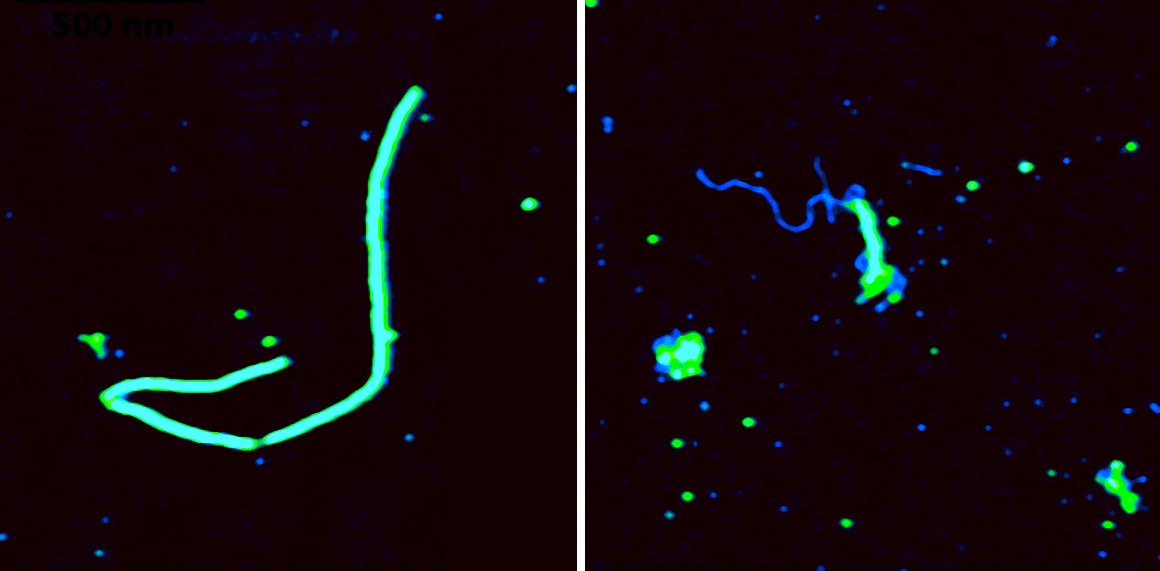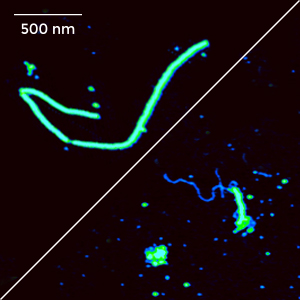Genetic Disease Breakthrough Published in ‘Nature Communications’
 isbscience.org/news/2015/12/18/genetic-disease-breakthrough-published-in-nature-communications/
isbscience.org/news/2015/12/18/genetic-disease-breakthrough-published-in-nature-communications/
FOR IMMEDIATE RELEASE
Genetic Disease Breakthrough Published in Nature Communications
SEATTLE, DEC. 18, 2015 – A team of investigators based in Seattle, Amsterdam, and Luxembourg, have established the cause of a rare syndrome consistent with Fanconi Anemia, a chromosome instability disorder which is clinically typified by birth defects, bone marrow failure, leukemia, and susceptibility to solid tumors. The results were reported by researchers from the Institute for Systems Biology (Seattle), the Free University Medical Center in Amsterdam, and the Luxembourg Centre for Systems Biomedicine and several other institutions in the United States and Europe in the journal Nature Communications on December 18, 2015 (DOI: 10.1038/ncomms9829).

Researchers report a de novo mutation in the DNA repair gene Rad51 in an atypical subtype of Fanconi anaemia
Using advanced whole genome sequencing in combination with other cell and molecular biology techniques, a mutation in the RAD51 gene was found in an affected child, but not in his parents or his healthy sister. The particular mutation observed in this patient is surprising for two reasons. First, it affects only one of the two RAD51 gene copies in the patient, suggesting a novel origin for the mutation in this patient. More typically, mutations that lead to Fanconi Anemia are derived from both parents (and thus show recessive inheritance). Second, even though only one of the two copies of the patient’s RAD51 gene is affected, the protein product that carries the mutation interferes with the activity of the normal protein which is to repair damage to DNA. Thus the mutation is dominant and acts in a negative way, to impede DNA repair.
This finding has implications for genetic counseling of families facing Fanconi Anemia. Furthermore, understanding the mechanism of action of this mutation shows how the RAD51 protein protects the DNA and how disruptions of DNA repair may lead to birth defects, leukemia and solid tumors. Understanding the origins of human cancer will help diagnose it earlier and may help us devise new therapies to prevent or mitigate it.
This work was organized and sponsored by collaborations between the Institute for Systems Biology, Seattle (USA) with the Luxembourg Center for Systems Biomedicine (Luxembourg), the Free University Medical Center in Amsterdam (The Netherlands) with the assistance of several other institutions or universities in Europe and the United States.
– end –
About the Institute for Systems Biology: The Institute for Systems Biology is a nonprofit biomedical research organization based in Seattle, Washington. It was founded in 2000 by systems biologist Leroy Hood, immunologist Alan Aderem, and protein chemist Ruedi Aebersold. ISB was established on the belief that the conventional models for exploring and funding breakthrough science have not caught up with the real potential of what is possible today. ISB serves as the ultimate environment where scientific collaboration stretches across disciplines, where our researchers have the intellectual freedom to challenge the status quo, and where grand visions for breakthroughs in human health inspire a collective drive to achieve the seemingly impossible. Our core values ensure that we always keep our focus on the big ideas that eventually will have the biggest impact on human health. Since 2000, ISB has grown to about 200 staffers, which includes 9 faculty members and laboratory groups. See more at isbscience.org.
About Luxembourg Center for Systems Biomedicine: The Luxembourg Centre for Systems Biomedicine develops and applies systems-level approaches to gain insight into the molecular and cellular mechanisms of human diseases. Experimental and computational approaches are combined to analyse the complexity of biological systems underlying disease pathogenesis. The LCSB is pioneering the way for a predictive, preventive and personalised medicine. Neurodegenerative diseases, especially Parkinson’s disease are major targets within LCSB’s research activities.
About VUMC: VU University Medical Center’s core business consists of patient care, scientific research, and education. Its focal areas in care and research are: cancer and the immune system, the brain, movement, vital functions and extramural care. Every year 55,000 patients are admitted (some for day therapy), over 336,000 patients visit the outpatient clinic and 34,000 visit the Emergency Department. About 2,400 medical students receive an education. The results of scientific research are presented in about 2,400 scientific publications and reports each year, including about 150 PhD theses. VU University Medical Center is a member of the Netherlands Federation of University Medical Centers (NFU). The NFU is a collaborative venture of the eight university medical centres (UMCs) in the Netherlands.






